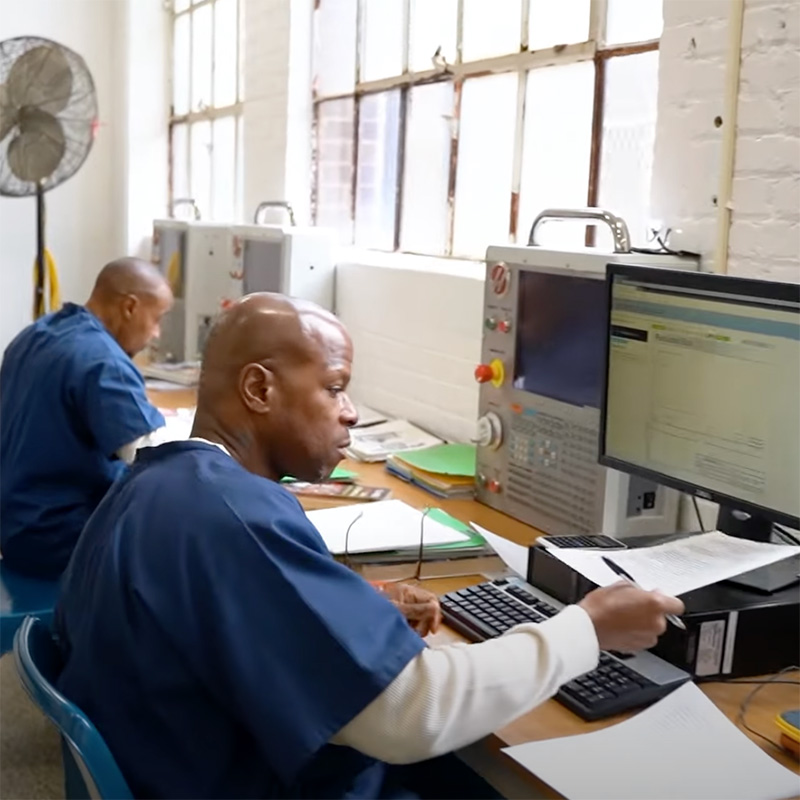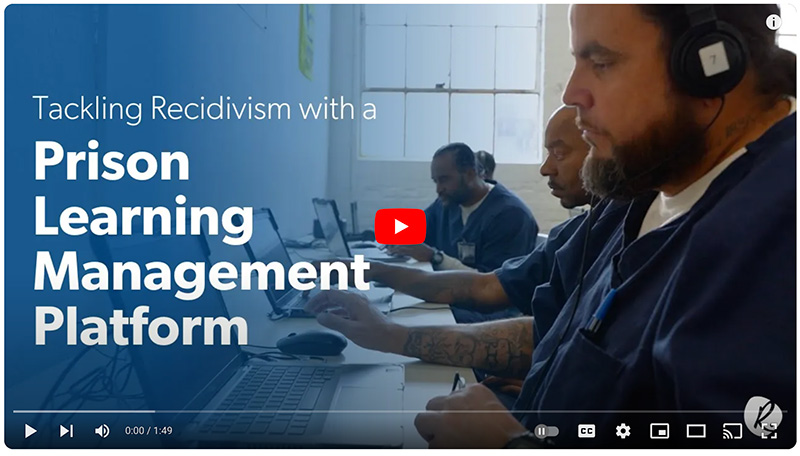Remember life before the digital age? Consider how much things have changed in even the last 10 to 20 years. Most of us don’t think twice about performing many of our daily activities through our smartphones, whether it’s communicating, obtaining medical care, finding housing and employment, buying things, or even managing our finances. We self-check everywhere from grocery stores to the DMV. Even our cars can run on electricity, tell us where to go, and help us park when we get there.
Now, imagine being sequestered from society throughout that entire time and integrating back into the world as we know it with very few technical skills, if any. Unfortunately, this is a reality for many formerly incarcerated individuals after they’ve been released from correctional facilities.
Luke Elliot Summer writes in Wired,
I’ve been in federal prison for 17 years. During that time, I have watched flip phones become iPhones, EVs become ubiquitous, and AI start to take over the world. Still, I have been largely unable to use that technology myself. I am not scheduled to get out for another 11 years. Without access to technology and adequate training, when I do leave, I will be entering a society that is unrecognizably different from the one I left.
Summer’s experience isn’t unique. As a result, more and more penal systems are recognizing a growing need to ensure digital equity as a vital component of rehabilitation efforts so incarcerated individuals will have the technical tools and skills they need to successfully reintegrate into society once they are released.
Setting inmates up for success
In 2016, the United Nations General Assembly declared internet access to be a basic human right. And when there is a disparity between those who have online skills and resources and those who don’t, a digital divide ensues.
On the flipside, digital equity occurs when all individuals have equal access to digital tools, resources, and the internet, so each person can fully participate in society as part of their daily life. This not only includes having equipment and reliable internet connectivity, but it also involves providing digital literacy training and the developing inclusive technologies that cater to diverse needs.
Employment is a critical factor in reducing recidivism among former correctional facility residents. And a major role in helping to make that happen. If released individuals lack the basic technology skills needed in most jobs today, they are less likely to find a job. However, education can significantly improve individuals’ chances of finding a job after release, thereby reducing their chances of reoffending.
An Emory University study revealed the strong connection between education in prison and recidivism: The more education a person participates in while incarcerated, the less their likelihood of returning to prison.
Nationally, recidivism rates are around 70%. However, consider how this number drops based on the education individuals receive:
- Vocational training cuts recidivism to approximately 30 percent.
- An associate degree drops the rate to 13.7 percent.
- A bachelor’s degree reduces it to 5.6 percent.
- A master’s degree brings recidivism to 0 percent.
Bridging the gap for correctional facilities
Giving incarcerated learners the access they need to further their education and training without compromising strict prison security protocols requires meticulous planning and execution, including very specific decisions about where to enable collaboration and where to restrict it.
- Secured and controlled access: Safely provide internet and digital tool access within the correctional system, considering security concerns and ethical implications.
- Curriculum development: Incorporate digital skills into educational programs for incarcerated learners, including curriculum design, instructional methods, and outcome assessments.
- Public-private partnerships: Collaborate between the tech industry, educational institutions, manufacturing and transportation companies that employ those with vocational skills, and correctional facilities to offer digital equity programs, leveraging each sector’s strengths.
- Policy and advocacy: Work to implement correctional policy reform to support digital equity as a pillar of rehabilitation, including legal, operational, and funding considerations.
Real-world impact
Check out some success stories from formerly incarcerated individuals who have benefited from digital equity initiatives.
Getting started
To get started, there are four steps states can take:
1. Assessment: Start off by evaluating current levels of digital access and literacy among the incarcerated population to identify gaps and opportunities.
2. Funding: Identify various funding sources, including federal grants, private contributions, and public-private partnerships, to finance digital equity initiatives in prisons.
3. Pilot programs: Launch small-scale pilot projects to test and refine digital literacy programs, allowing for adjustments before wider implementation.
4. Training the trainers: Develop a cadre of educators and correctional staff who are skilled in delivering digital education, ensuring the sustainability of these programs.
Setting the course for equity and rehabilitation
In an ever-changing technological landscape, states, technology companies, and educational institutions need to work together to create a future where digital literacy is seamlessly integrated into prisoner rehabilitation programs to contribute to lower recidivism rates and a more inclusive digital society.
By expanding digital equity in correctional facilities, we can forge pathways for incarcerated individuals to rejoin society equipped with the skills needed for a digital world, thus fostering a more equitable and safe community for all.
Share:
About the Author

Paul Bahl
Director, Google Services @ Resultant
Paul’s greatest successes in his more than 20-year technology career all stem from engaging with customers to ensure their technology empowers them rather than hinders them. He has sold...
Read More





